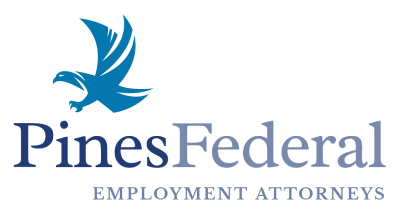Navigating Social Security Disability Insurance (SSDI) and Supplemental Security Income (SSI) requires understanding their distinct eligibility criteria and benefits. This episode of Empowering Workers introduces attorney Eric L. Pines and Social Security disability advocate Courtney Bolton, who share expertise on these programs, covering work history requirements, resource limits, medical standards, and common misconceptions to help individuals secure disability benefits.
What are the key differences between SSDI and SSI programs?
SSDI and SSI are disability programs managed by the Social Security Administration, each serving distinct purposes. SSDI is an insurance-based program tied to work history, requiring individuals to have worked 10 years total, including 5 of the last 10 years. SSI, a needs-based program, focuses on financial hardship, with strict resource limits but no work history requirement. Both programs mandate a medical disability to qualify, supporting individuals with significant impairments.
What are the work history requirements for SSDI eligibility?
SSDI eligibility hinges on work history, functioning like an insurance program where contributions through payroll taxes act as premiums. Individuals typically need 10 years of total work and 5 years within the last 10 to qualify, though exceptions exist for younger workers with shorter work histories. This requirement ensures only those who have paid into the system access SSDI benefits, distinguishing it from SSI’s needs-based approach.
What are the resource limits for SSI eligibility?
SSI imposes strict resource limits, capping countable assets at $2,000 for individuals and $3,000 for couples. Countable resources include cash or assets that can be liquidated, such as bank accounts or stocks, but exclude personal effects and, for married individuals, the primary residence if occupied by a healthy spouse. SSDI has no resource limits, as eligibility depends solely on work history, not financial need.
What medical standards apply to SSDI and SSI claims?
Both SSDI and SSI share identical medical standards, evaluated by state Disability Determination Services. These agencies assess whether an individual’s condition meets the Social Security Administration’s disability criteria, ensuring consistency across both programs. The same medical evidence is reviewed, regardless of whether the application is for SSDI, SSI, or both, streamlining the evaluation process.
Should you apply for SSDI, SSI, or concurrent benefits?
Determining whether to apply for SSDI, SSI, or both depends on work history and financial need. Individuals with sufficient work history (10 years total, 5 in the last 10) qualify for SSDI, while those with limited resources ($2,000 or less for individuals) may qualify for SSI. Concurrent applications are common when SSDI payments, calculated from earnings, fall below SSI’s maximum federal payment of $967 per month, allowing additional SSI benefits to bridge the gap.
How are SSDI and SSI benefits calculated?
SSDI benefits are calculated based on an average of an individual’s highest 35 years of earnings, reflecting their contributions to the Social Security system. SSI benefits start at a maximum of $967 per month, reduced by other income. Unearned income, like Social Security or VA benefits, offsets SSI dollar-for-dollar after a $20 exclusion, while earned income reduces SSI by $1 for every $2 earned after a $65 exclusion, ensuring benefits align with financial need.
What are the most common misconceptions about SSDI and SSI?
Common misconceptions about SSDI and SSI can lead to missed opportunities. Many believe SSDI is superior due to its work-based nature, but SSI’s immediate Medicaid eligibility is critical for those needing instant medical coverage, unlike SSDI’s two-year Medicare waiting period. Another myth is that qualifying for one program precludes the other, yet concurrent applications are possible, ensuring individuals maximize available benefits.
How does Pines Federal support disability benefit applicants?
Pines Federal assists clients by thoroughly evaluating their medical conditions, work history, and financial needs to determine eligibility for SSDI, SSI, or both. The team, leveraging Courtney Bolton’s 23 years of Social Security Administration experience, guides clients through the 6-7 month initial application process and identifies local resources for support during the wait. This comprehensive approach ensures clients access all eligible benefits without leaving money on the table.
What pitfalls should applicants avoid in SSDI and SSI claims?
The biggest mistake in applying for SSDI or SSI is failing to apply due to the process’s complexity and duration. Without professional guidance, individuals may miss programs they qualify for, effectively denying themselves benefits. Consulting experts like those at Pines Federal prevents this, ensuring applications are correctly submitted and supported by thorough documentation. For expert assistance, visit pinesfederal.com.


